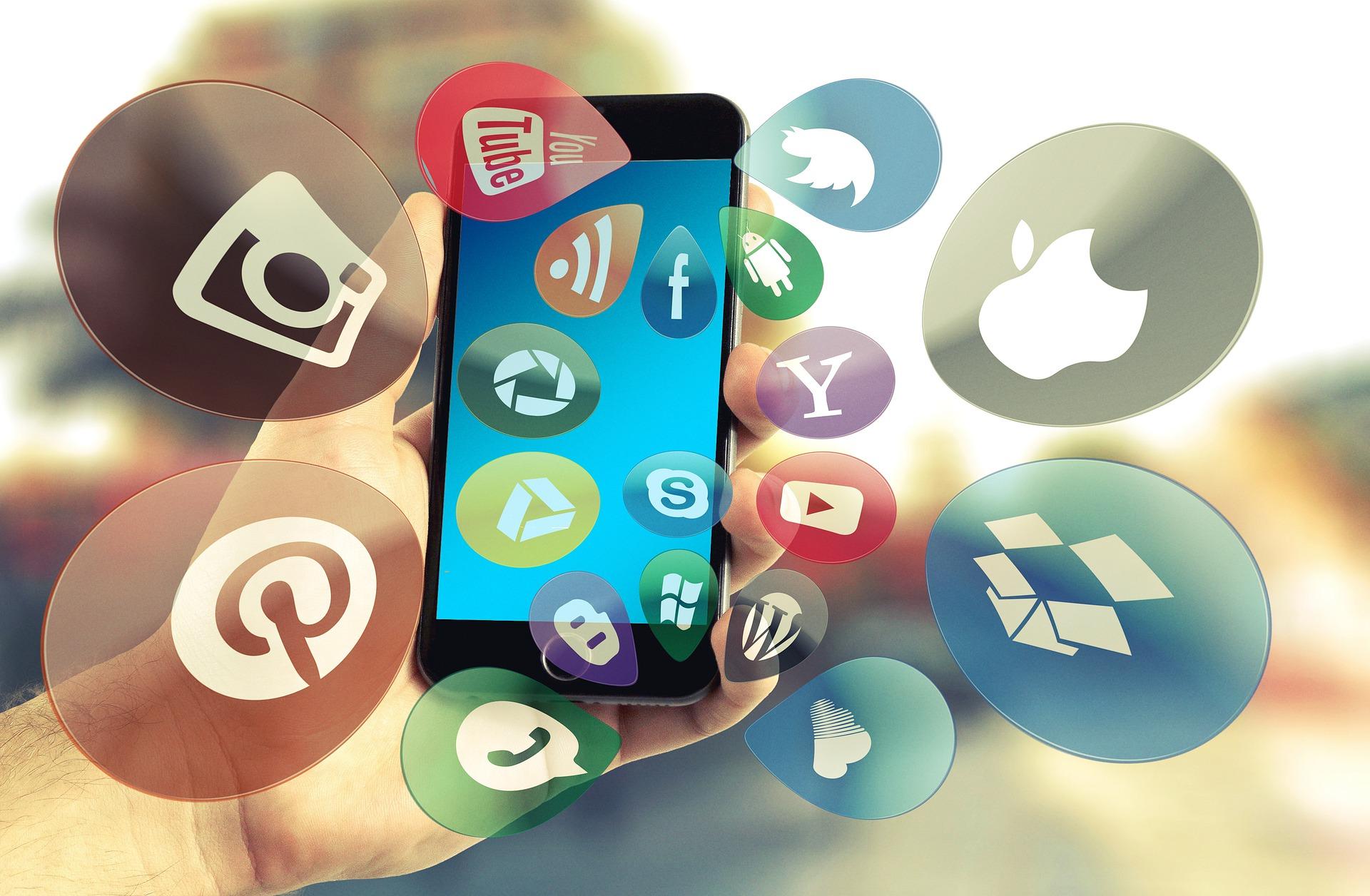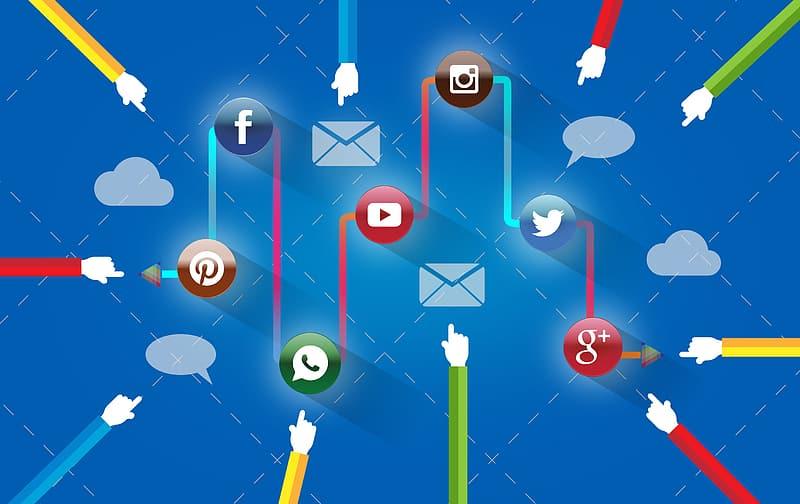Influencer marketing might be something you’re hearing about more and more, but the truth is businesses and marketing teams have been using influencer marketing in some capacity for a long time.
The difference is that now there are actors, writers, bloggers, YouTubers, and yes, even social media stars, who use the label, “influencer” as a term to describe their function.
It’s quickly becoming a core marketing strategy for major players all around the globe and showing no signs of slowing down.
But with a term so widely used and broadly defined, it’s got a lot of people scratching their heads wondering, “What exactly is influencer marketing?” “How does it work?” and “Who is using it?”
We’ve got the answers to all those questions and more, but let’s start at the beginning.
What does “influential” mean?
Influence is defined by Merriam Webster Dictionary as, “the power or capacity of causing an effect in indirect or intangible ways.”
Hmm, not quite the specific answer you were looking for is it?
To put it into a modern context, influence is the power that people and ads have and use to convince us to click on a link, subscribe to a video or email list, or make a purchase in a store or online.
Here are a few examples:
- If an ad is influential it means it’s engaging and it has great power to convince others to buy whatever is being advertised.
- When influential people speak, others listen and follow their advice.
- An influential moment has the power to alter the course of your afternoon, week, or even the rest of your life.
And one more to really drive it home:
Think back to your teenage years. Remember when your parents told you to stop hanging around with someone because they were a “bad influence?” For better or for worse, your parents recognized that person’s power to convince you to do something…which just so happened to be the kind of behavior your folks didn’t approve of.
To sum it up, “influential” is the word that we use to describe someone or something that has the power to change us. Influential people and advertising campaigns have been important tools used in business, politics, and much more for a long time, and that’s not likely to change any time soon.
When did influencer marketing start?
Influencers are not new. In fact, some of the first influencers can be traced back to the early 20th century.
In the early 1900s, brands in various markets created personas to appeal to consumers emotionally. Think Tony the Tiger, Kool-Aid Man, and Santa Claus (yes, the chubby, jolly symbol of Christmas in the form we all know and love today is, in fact, an illustration for an ad that was launched by Coca Cola, but that’s a story for another time).
Back then, no one used the term “influencer” to describe these characters, but they worked the same way. By generating the image of an illusory third party sampling a brand of product, the brand increased the likelihood that consumers would relate to and sympathize with them.
Sound familiar?
Fast forward to today and we no longer have to generate personas. The personas already exist on social media.
Now it’s just a matter of choosing the right one to represent your brand.
How does influencer marketing work?
Influencer marketing works by implementing business tactics that are key ingredients in any successful marketing campaign.
The first of these tactics is word-of-mouth marketing.
Word-of-mouth Marketing
You see word-of-mouth marketing all over the place.
Every time you’re encouraged to rate an app or rideshare driver, or review your hotel or homestay experience, you are being invited to participate in a company’s word-of-mouth marketing strategy.
Brands know that people trust the opinions of those close to them and so they encourage us to provide our opinions.
Now imagine if you were a business that could earn a five-star review from someone with hundreds of thousands of loyal fans and voila, you’re imagining an influencer.
Another strategy influencer marketing leverages is something called social proof, which is a form of word-of-mouth marketing that engages many people instead of just a few.
Social Proof
These are the success stories and testimonials you read at the bottom of a brand’s webpage that talk about how their product contributed to the happiness and wellbeing of themselves and others.
While some forms of social proof like Facebook reviews, for example, rely on the power of many reviews (crowd proof) to sway public opinion, influencer marketing instead shifts the power focus to one very prominent review.
Especially if the influencer is a respected figure in that brand’s industry, it can mean huge rewards for the company.
Word-of-mouth marketing and social proof are critical aspects of any successful marketing strategy. The reason they are so prominent in influencer marketing is that the value of these tactics is maximized through the brand’s use of an illusory third-party.
Customers trust their peers, friends, and idols more than a big company, so they’re much more likely to purchase a product or service promoted by someone they respect and look up to rather than the company directly.
What is an Instagram influencer?
Influencer marketing has taken many shapes over the years and one form of it that many people are talking about today is the Instagram influencer.
Instagram influencers are users with established credibility and audience who can successfully persuade others to purchase products or services using their personal authenticity and fan loyalty.
Instagram influencers may have unique backgrounds and business strategies, but they all essentially do the same thing: use their influence to sell products or services on Instagram.
We can break Instagram influencers down into two main groups.
Group 1: These influencers earned their fame using the platform, gaining followers over time by producing attractive and engaging content. Now they use the loyalty of their hard-earned fans and followers to promote products and services on their feed. These influencers tend to stick to their loyal fanbase on Instagram, rarely appearing in television or print ads.
Group 2: These influencers were already famous and they bring their preexisting celebrity as well as all of their fans with them to Instagram. They also persuade their audience to purchase goods and services, but they have a bit more agency. You’ll likely see ads from these influencers on television and in magazines as well as other online platforms like Twitter, Facebook, and YouTube.
Is influencer marketing effective?
According to the results from this 2019 Influencer Marketing Survey, 80% of marketers responded that they found influencer marketing effective in 2018 while 89% of those polled said their return on investment (ROI) from influencer marketing was comparable to or better than other marketing channels.
Nearly two-thirds of marketers increased their influencer marketing budgets in 2019 and 17% of companies planned to spend over half their marketing budget on influencer marketing alone.
And that’s not all. According to this 2019 Influencer Marketing Report, Influencer marketing is practiced by over 93% of marketers and is predicted to be a $10 billion industry by the end of 2020.
When to use influencer marketing
If you’ve been watching the numbers and are considering joining the ever-growing percentage of marketing agencies and departments around the world by leveraging influencer marketing, you already know that timing is everything.
So when is the best time to incorporate influencer marketing in your business strategy?
The short answer: now. As you’ve seen in the stats listed above, more and more people are jumping on the influencer bandwagon now. As is the case with anything new, it’s only a matter of time before it becomes difficult to stand out.
Companies are becoming increasingly outspoken about social justice issues and supporting various causes in their communities and around the world.
Standing with a cause and responding to this generation’s growing list of concerns is one way to attract and maintain a loyal audience.
Authenticity is everything with today’s consumers and you can show them you care about their concerns by paying attention to what’s going on around the world and responding accordingly.
These communities are already full of influential figures and speakers, so it’s a great way to find an influencer while supporting a cause that you care about.
Companies that use influencer marketing
As we’ve outlined above, nearly everyone is using influencer marketing to some degree but some are doing it better than others. As we prepare to take on the rest of 2020, here are some of our favorite examples from 2019.
Gillette
The popular razor brand has a knack for putting out ads that tug at heartstrings and their Christmas gift-giving campaign of December 2019 was no exception.
Gillette launched a personalized razor to bring attention to their subscription-style razor service that was launched to compete with other successful shave subscription companies like Henry’s and Dollar Shave Club.
They partnered with major players like the NFL and NASCAR to allow their customers to upload images or text online to be included on the razor’s handle when they order.
To get people excited about the new feature, Gillette tapped influencers to target men and women alike, featuring photos and videos of women wrapping up gifts and dads shaving with their sons. Gillette targeted a wide range of influencers in its campaign, with gift-giving as the primary theme.
Warby Parker
The popular online glasses store is valued at over $2 billion dollars and the company openly attributes much of its success to its social media influencers on Instagram and Youtube.
“Wearing Warby” is Warby Parker’s page dedicated to its influencer customers displaying them in their native environments to advertise everyday essential eyewear.
The influencer team has grown from only seven in 2018 to sixteen unique and interesting personalities, ranging from food bloggers to stand up comedians.
The #WearingWarby series is designed to highlight special individuals who use their eyewear to accomplish amazing feats.
Dyson
The vacuum brand has targeted dog owners in the past and they’re no stranger to the thriving canine community on Instagram.
Viral cat videos are a natural fit for a brand that markets its products as capable of tackling heavy-duty jobs, including pet fur removal as well as other, less lovable animal-induced messes that are an inevitable part of pet parenthood.
Many companies are beginning to target pet and pet owner accounts as a part of their influencer marketing campaigns. Sponsored posts using the tags #dysonpets and #dysonv10 targeted almost 1.3 million Instagram users and scored a combined total of 115,176 likes, 1,935 comments and an average engagement rate of nearly 11%.
TikTok
We rarely talk about the platforms that are used to launch influencers to fame because we often see them as a promotional means to an end, but TikTok is a hard platform to ignore. Interpreted by many to be the replacement of Millenials’ and Gen Z’s lost-but-never-forgotten video app, Vine, TikTok is making waves as an influencer marketing tool.
TikTok’s #SavorTheFlavor Hashtag Challenge was a collaboration with Instagram to encourage users on the up and coming app to become viral food creators! TikTok encouraged its users to upload “food adventures” transforming ordinary foods into oh-so-satisfying video experiences. Videos with the hashtag have racked up nearly 250 million views and the whole thing was started by influencer campaigns.
What are influencer campaigns?
An influencer campaign is essentially an agreement between an influencer and the brand that they’re promoting.
The brand and promoter discuss details such as pay, type of promotion, and the beginning and end date for the campaign.
Most influencers are paid before the start of a marketing campaign, and others are paid on a percentage-based commission basis after it ends.
The compensation varies according to the influencer’s reach, the type of endorsement, and the success of the campaign (how many people buy, click, subscribe, etc.).
Top-tier influencers and celebrities have received a six or seven-figure fee for a single post while micro-influencers (influencers with 500 to 10,000 followers) may accept payment in the form of free goods or services.
Influencers vs Affiliates
Influencers help brands connect to their audience by joining their marketing team as an industry leader.
As an important figure in their industry, a consumer is more likely to buy a product or sign up for a service because your brand is recommended by a trusted name in that community.
Affiliate marketing has been around as long as e-commerce itself, but it offers something different than influencer marketing.
Affiliates are essentially entrepreneurs who take the opportunity to invest in a product that a larger, more established business has already created in return for a percentage of the profits.
Why influencer marketing works
Influencer marketing works because people trust influencers. In the world of business and sales, everything is a negotiation and consumers refuse to negotiate with a person or a deal they can’t trust.
Those with experience selling products and services know that pricing plays a large role in this. Set the price too high and you miss out on sales to those who can’t afford what they deem to be a luxury item.
Set the price too low and people will think you’re selling a cheap or irresponsibly-produced product
The role of the influencer in this negotiation is to be the one who says to the uncertain consumer, “I’m an expert when it comes to this stuff and I am happy with my purchase.”
As the use of social media only continues to grow, we’re seeing more and more of these trusted third parties we call influencers, ranging from industry experts and academics to pro skaters and drag queens.






Pingback: Ad Spend Is Soaring in 2023 and Digital Titans are Riding the Wave - // 551 Media LLC
Influencer marketing is one of the best and a very famous way to make more conversions these days. As per a research it is proved that influencer marketing is a proven technique. Subscribed your blog for more updates like this.